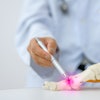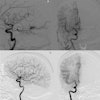
Konica Minolta Healthcare Americas is highlighting a study that examined the utility of its dynamic digital radiography (DDR) technology for the assessment of dyspnea. The research will be presented at the ongoing 2019 annual meeting of the American Thoracic Society (ATS) in Dallas.
The researchers from the Icahn School of Medicine at Mount Sinai in New York City evaluated the ability of DDR to help pulmonologists and radiologists identify and better understand pathophysiologic abnormalities of the lungs, compared with chest x-ray (CXR), CT, and pulmonary function testing (PFT).
They found that DDR was a safe clinical option for assessing pulmonary function and diagnosing the underlying cause of dyspnea, especially in patients unable to undergo pulmonary function testing. They also suggested that DDR could help shed light on the functionality of quiet respiration, the most common type of breathing.
"Current studies, such as CXR, CT scan, and PFT, are performed in a forced breath maneuver, and this can underestimate how much pulmonary reserve the patient actually has," lead investigator Dr. Mary O'Sullivan said in a statement from Konica Minolta. "By enabling direct visualization of the kinesiology of the respiratory system, DDR may allow for earlier discovery and a more clear understanding of the etiology of dyspnea in a patient, enabling the clinician to streamline tests and reduce the time from evaluation to diagnosis."
Konica Minolta debuted its DDR technology, capable of acquiring 300 x-ray images with a dose equivalent of two standard x-rays, at RSNA 2018.



















